What is a 2-3 Zone?
A 2-3 zone is a zone defense where 2 players are defending around the top of the key and 3 players are defending across the baseline. It is a versatile defense that can be used for multiple reasons. It is a defense that is easy to teach because the amount of moving parts is minimal. The areas of the floor have been sectioned off so every player has a particular area to guard and nothing more. Because of the simplicity this tends to be the zone defense used most often at the younger grades.
Advantages of a 2-3 Zone
1) The 2-3 zone defense helps to put a lot of defenders in and around the paint area. This setup helps to defend against dribble drives. Even if an offensive player drives past the initial defender, there is usually 2 or 3 players to step up into the driving lane. It also helps to defend dominate post players. Due to the number of defenders in the paint area, it is easy to double a post player when they have the ball. This creates a defense that helps to shut down and secure the paint area.
2) A 2-3 zone usually causes a benefit to rebounding. While the ability to cleanly box out offensive players gets reduced, the amount of defenders in the paint area helps the defense rebound missed shots. It is simply a numbers game. Most of the time 3 or 4 defenders are in the paint so that is 3 to 4 players close to rebounds at every moment.
3) A 2-3 zone defense will force the opponent to take outside shots. By logic, the closer to the basket a player is the more likely the player makes their shot. By having so many people in the middle of the floor, it forces the offense to shoot more outside shots. If the offense does not make their outside shots then the 2-3 zone defense can be really effective in keeping the offense from scoring. As a team this can be a big advantage by dictating where the shots are being taken.
Disadvantages of a 2-3 Zone
1) Tempo. At the high school level, without the use of a shot clock, the tempo of the game can be a huge factor in winning and losing. The team that is able to control the tempo of the game creates a huge advantage in determining the outcome. In a 2-3 zone, the defensive team is unable to control any tempo in the game. The offensive team will determine the tempo by how quickly they choose to shoot the ball. If the better team is playing a 2-3 zone then the offense can really slow the game down and reduce the number of possessions during the game. The lower number of possessions, the higher chance of an upset occurring. However, if you are the less talented team then a 2-3 zone might be to your advantage as long as the game is close. If you fall behind, then the 2-3 zone will have to be abandoned at some point to catch back up.
2) Defending the 3 point line. The advantage of the defense is the ability to pack the lane and make the offensive team take more shots from the outside. But if the opponent is a good outside shooting team then there is a good chance the offense will get wide open looks from the outside playing against a 2-3 zone. This is why a 2-3 zone will work really well at the younger grades because the players usually are not very good outside shooters. As the players grow up into high school the outside shot becomes more of a weapon for teams to use because the players start to be able to make outside shots.
3) The defense loses the ability to match up their defenders against the offensive players. As an opposing coach playing against a 2-3 zone, I like to see what area the weakest defender is playing and put my best player in that area. This will create a need for a double or triple team. Then the ball is able to be passed into the areas where the defenders just left to help and it creates open shots. In the zone the defenders guard the players in their area. This gives the offensive team the ability to create mismatches by sending their best players into the areas to be guarded by the defense’s worst defenders. I want my best defenders guarding the other team’s best players and that is not possible in a 2-3 zone.
Positions of a 2-3 Zone
The ball is usually in 1 of 10 positions during an offensive possession. The zone rotates depending on where the ball is currently located. The following diagrams show the positioning of each defender in a 2-3 zone when the ball is located in these 10 spots. The zone will slightly change in an actually game because the offensive players will help to dictate some of the rotations. In a perfect world this is where each defender will be during an offensive possession.


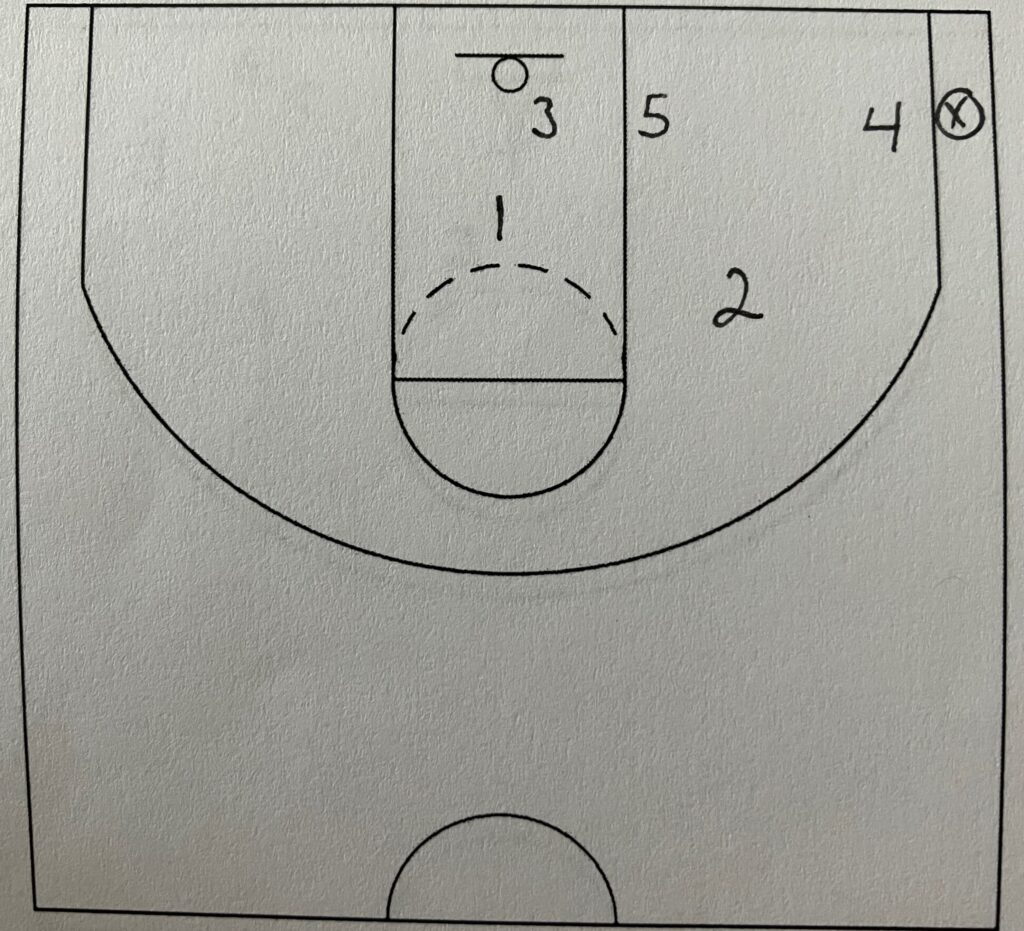
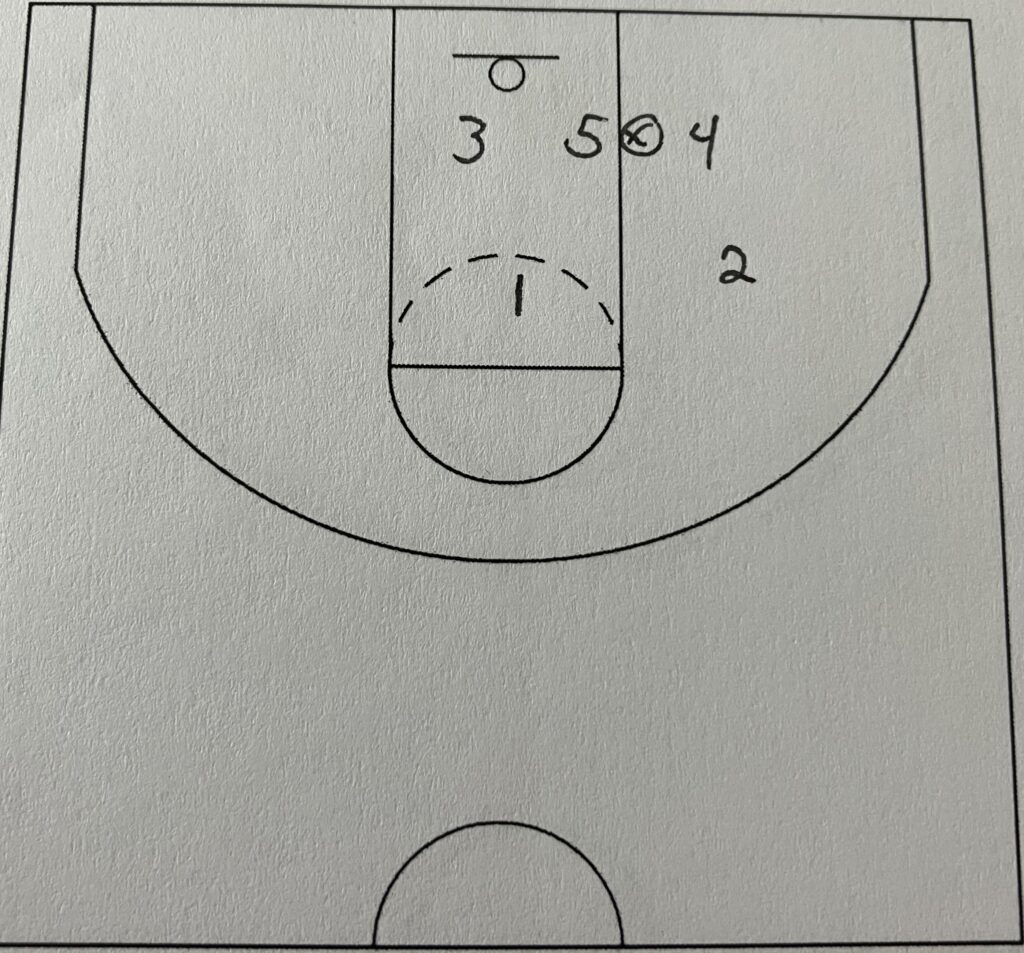
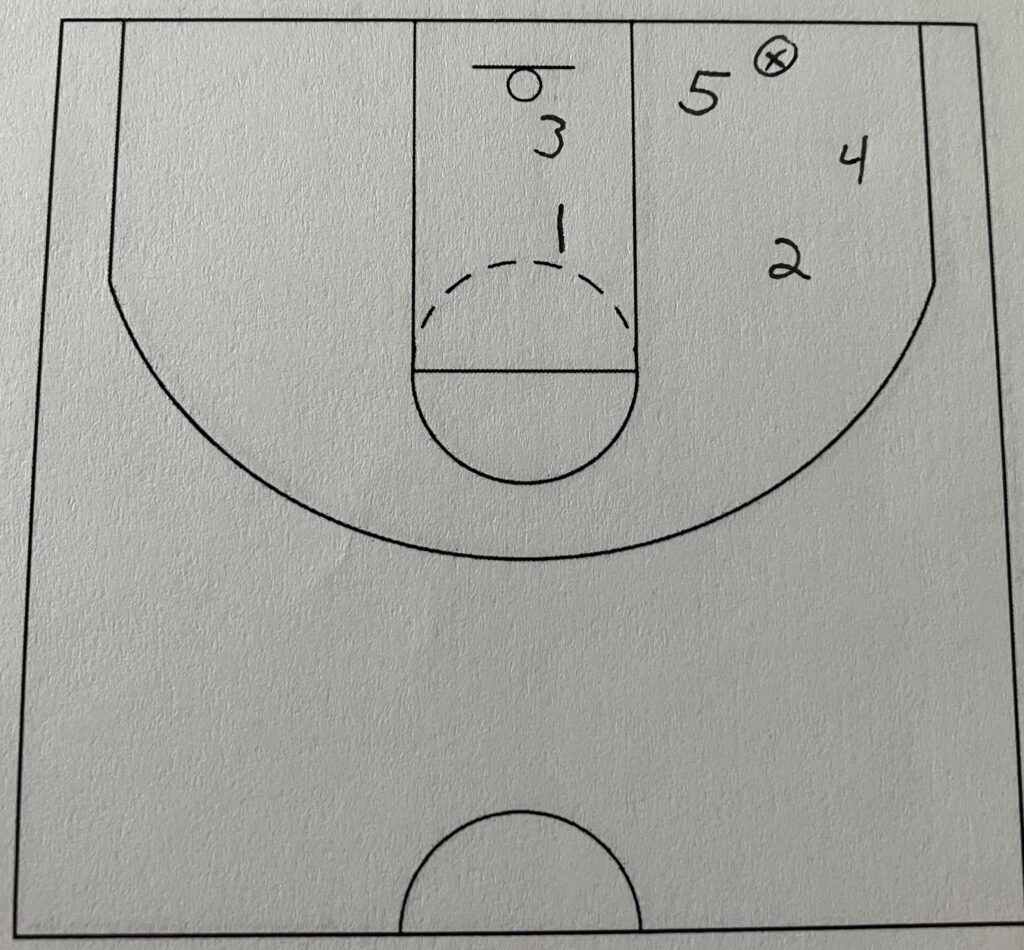
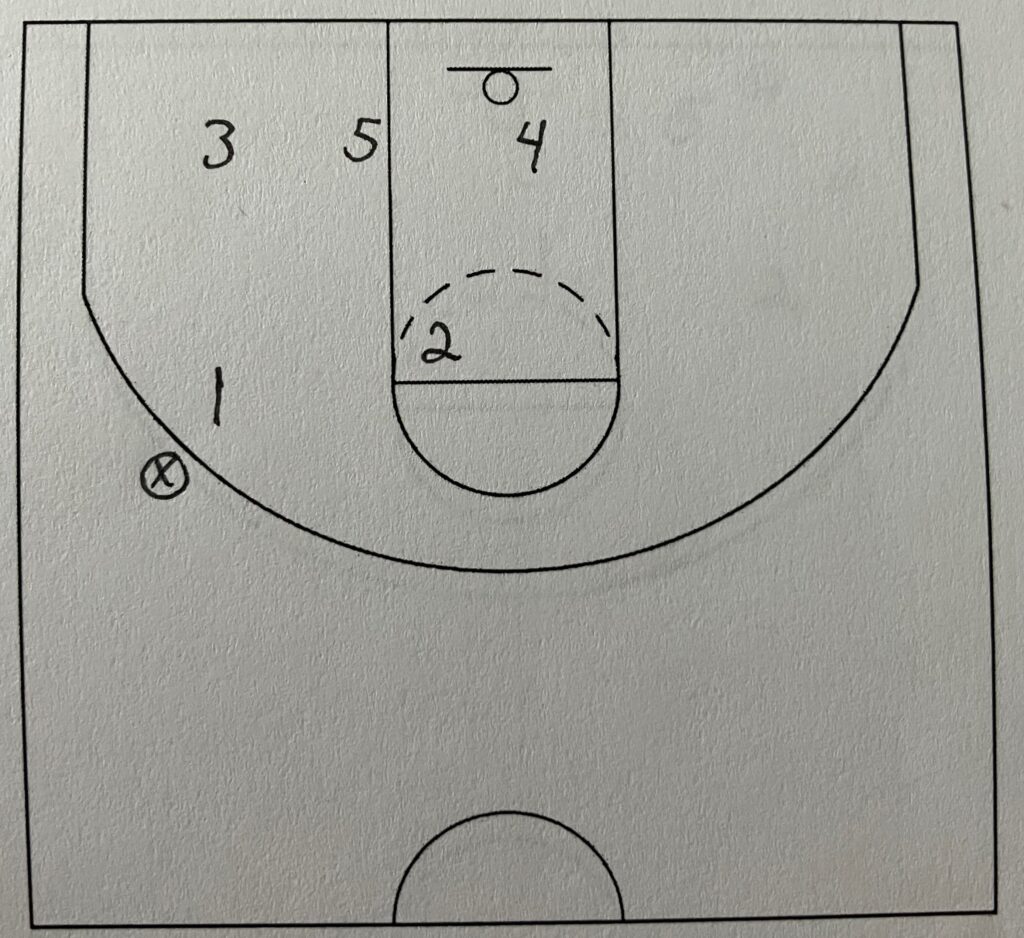
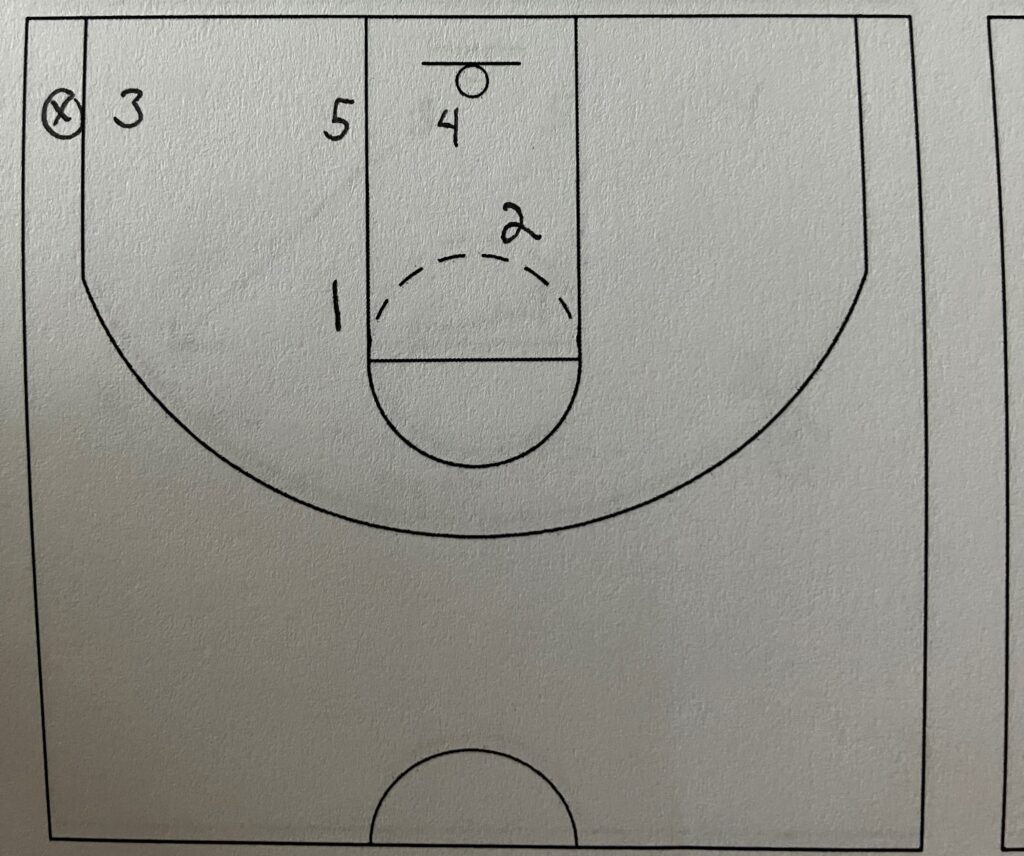
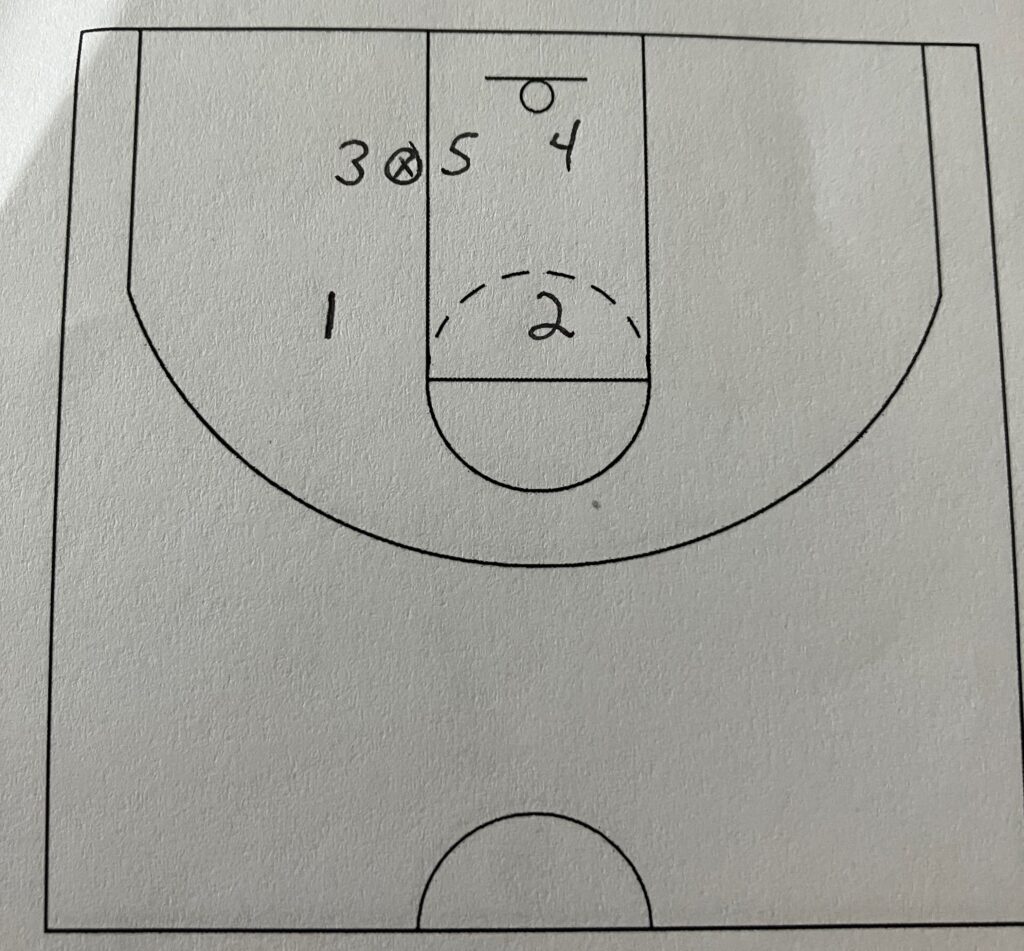


This is the 10 spots where the ball is most likely to be. The left and right sides of the zone are mirror images when the ball switches sides. This helps players learn the defense because it does not matter which side of the floor they are on. Their defensive responsibilities are the same.
I also like the bump method on closeouts on any skip pass. This is where the baseline defender closeouts to the wing on the skip pass and catch. The top defender then runs to the ball to guard the ball. As the guard gets to the ball the baseline defender bumps back down. The baseline defender does a closeout to give the necessary time for the top defender to get there to guard the wing area. This is what the bump rotation looks like.

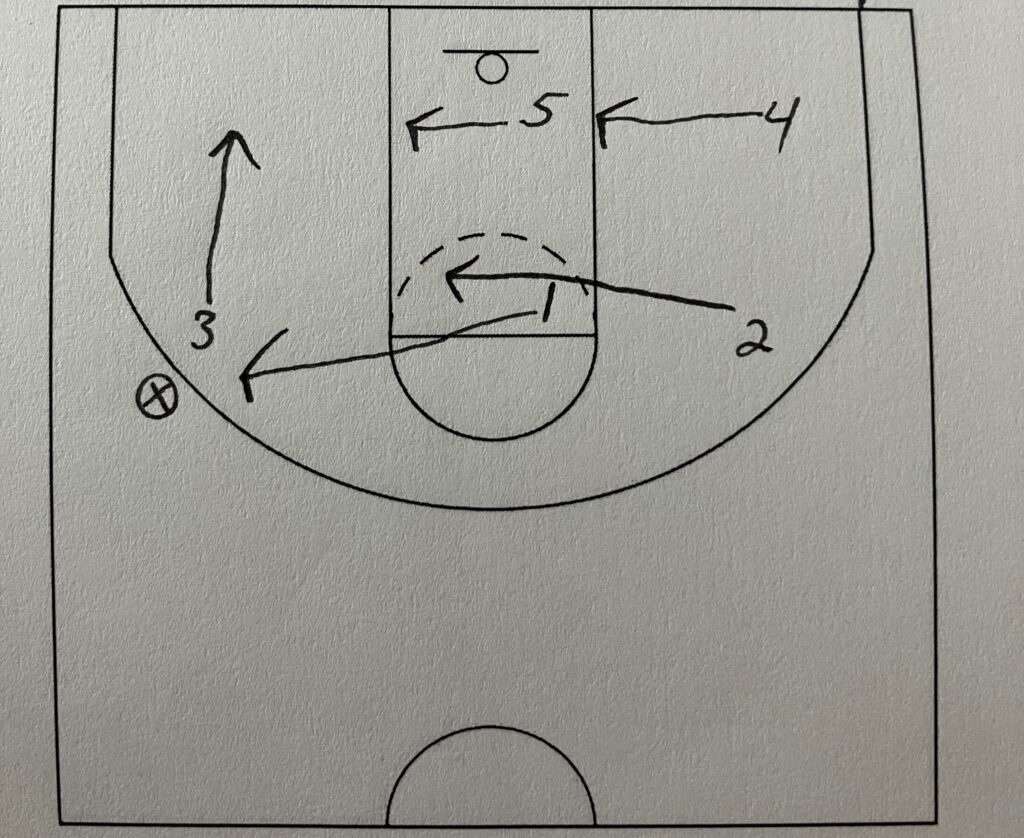
Trapping in a 2-3 Zone
One of the ways to turn a 2-3 zone into a more aggressive zone is to trap. There are really only two spots to trap that do not break the defense down rotation wise. The first spot is rushing the ball handler just as they cross half court. This brings an over and back violation into play as well. In order for this to work well, the bottom 3 players must move as the top two guys rush. The block defenders should sprint out to the wings and the middle man should take the high post area away. This could lead to easy steals on the passes to the wings or turnovers by throwing the ball out of bounds. The open pass is the over the top pass to the baseline. This is a hard to make and will lead to more turnovers than completed passes.
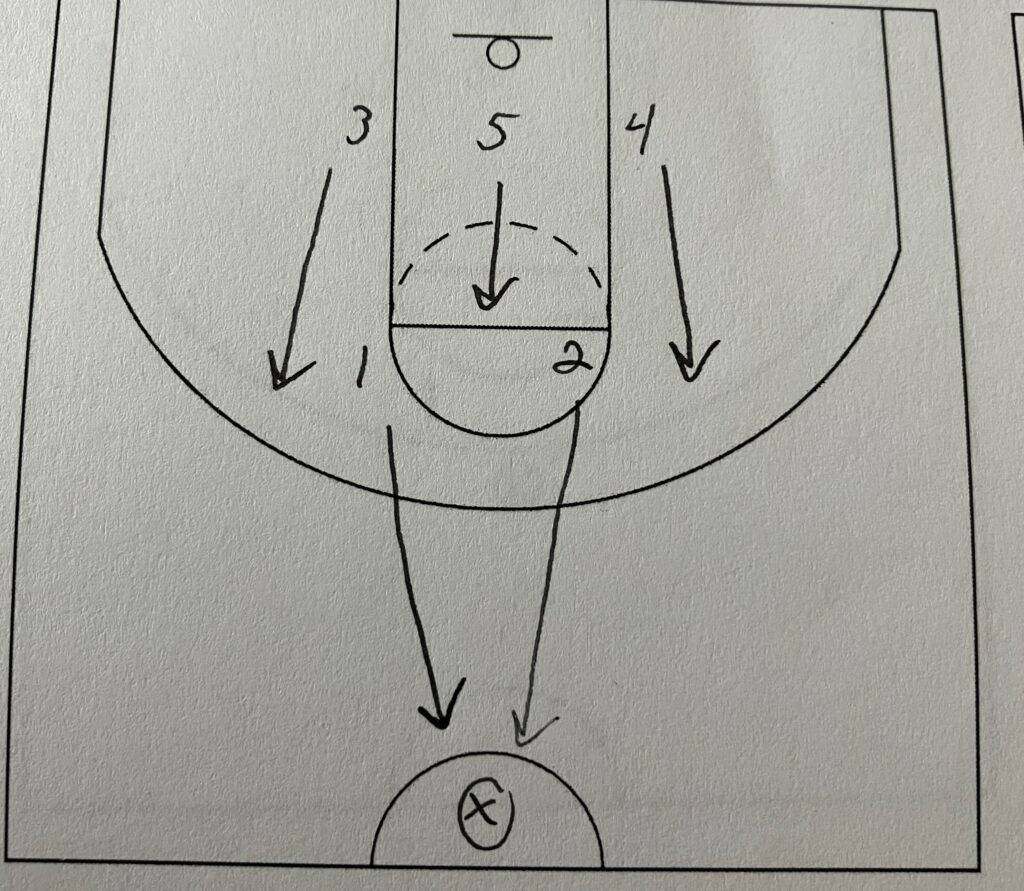
The second place to trap is in the corners. This brings the top man down from their normal position to the corner. This trap also brings the sideline and baseline into play as additional defenders. You can get really aggressive in this trap by sending the backside top man to the wing and the backside bottom player to the high post. However, if the ball is able to get out of the trap and to the backside then it is a wide open shot for the offense.
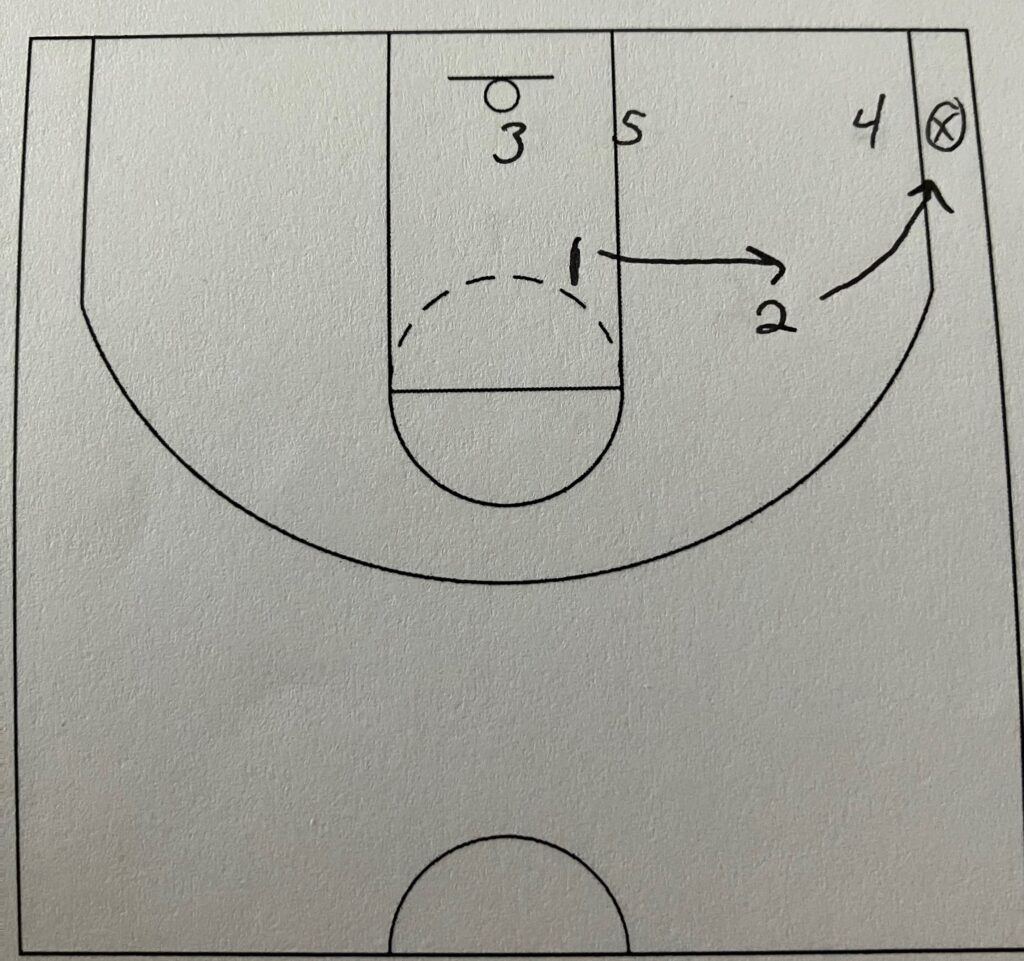
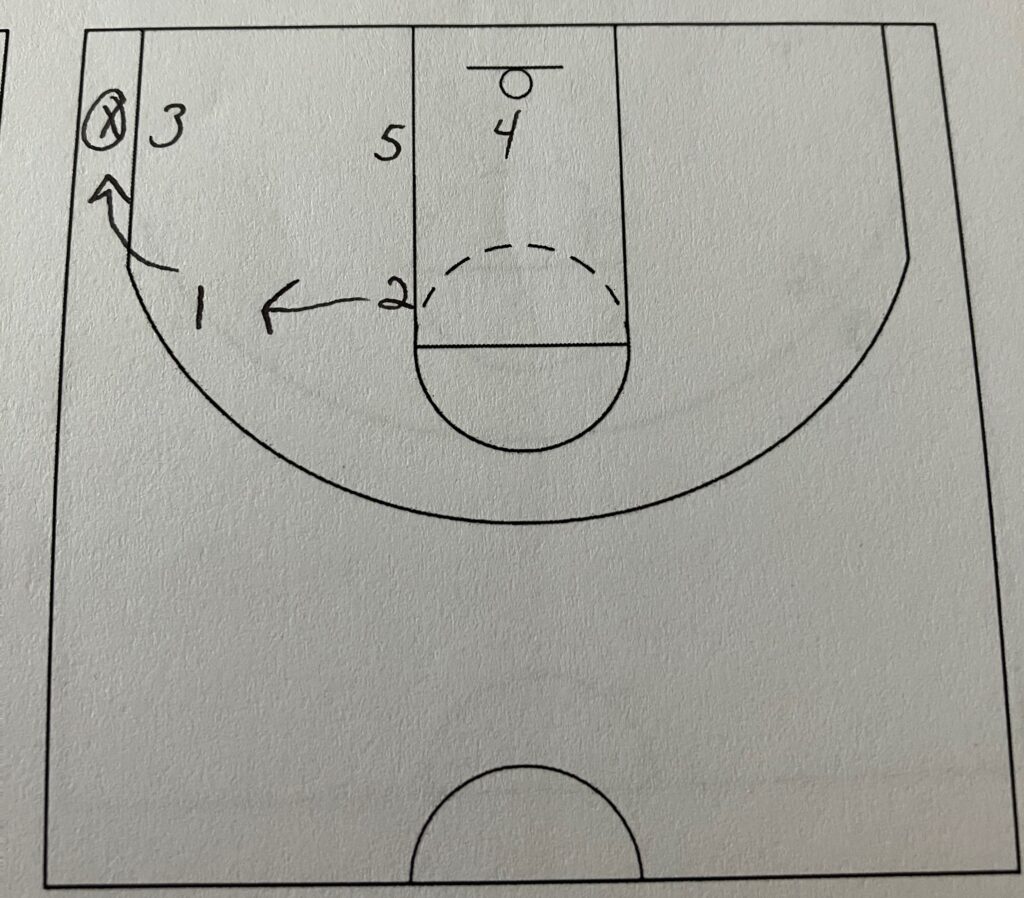
Personnel of a 2-3 Zone
Any personnel can work running a 2-3 zone. The following situations is where the 2-3 zone tends to be utilized most often.
1) The defenders cannot guard the offensive players 1 on 1.
2) The offensive team has a dominant post player.
3) The defense is not real tall.
4) The offense struggles to shoot from the outside.
5) The defense has a big and/or slow player. This defense can hide this type of player in the middle of the zone.
Keys of a 2-3 Zone
The keys to having a successful 2-3 zone is keeping the ball out of the middle of the zone. If the ball gets into the foul line area of the zone then the defense tends to break down quickly. The foul line area creates 3 scoring opportunities for the offense. It can lead to a foul line jumper. A pass behind the 5 man as they step up to guard. Or a kick out 3 if the defenders start to collapse on the ball. In all 3 cases this is an open shot for the offense.
The other big key is not letting the ball dribble drive between two defenders. The dribble must be contained with the two closest defenders. If the ball is able to be dribbled through 2 defenders and forces a 3 defender to help then the formation of the 2-3 zone gets distorted which leads to open areas for the offense to use.
Youth Basketball
I would rather have youth basketball run all man to man defense if possible. However, if youth teams are going to run a zone then this zone is the best zone to run. It is easy to understand. It is easy for kids to know what to do. At the youth level, there may be some kids that do not know what they are doing and this zone defense is a way to get them into the game and let them play. As the skill level increases either through player development or a selected team, like all-stars or AAU, then the 2-3 zone should absolutely not be ran at the youth level.
The 2-3 zone defense will be really effective at the younger grade level because of the lack of ability to shoot outside shots by the opponent. You have to understand the youth game should be about player development and not winning or losing. The focus on winning at the youth level will hurt player development and put the players behind as they go up in grades.
Conclusion
The 2-3 zone is really effective at the youth level when outside shooting is not very good. However, as kids grow, mature and get stronger then the outside shooting improves and with this improvement the 2-3 zone suffers. It is a defense that can be ran for kids that are new to the game and just starting to learn. But it should be a temporary use until those kids have a better understanding of game.
At the high school level, there are some things that can be done to improve the defense like a 2-3 matchup zone. The only really straight 2-3 zone that is effective from what I have seen is when the defense has a very tall player that can be used as a rim protector which lets the 4 other players be very aggressive because they are not worried about dribble penetration. Overall it is a good beginning zone defense but very limited in its use at the high school level and beyond.
Post-Script
Some of you reading this may be looking at what Syracuse did with the 2-3 zone and point to that as an example of the use of the 2-3 zone. When you look at the Syracuse 2-3 zone, the players are the difference. Former Coach Jim Boeheim recruited very long wing and post players. They were very active and very long. The length of the Syracuse players allows them to cover a lot of space without a lot of movement. The length is what made the Syracuse 2-3 zone work so well. In general most teams at the high school level on down to the youth level do not have the type of length advantage Syracuse had most nights to make the defense as successful as what Syracuse did.

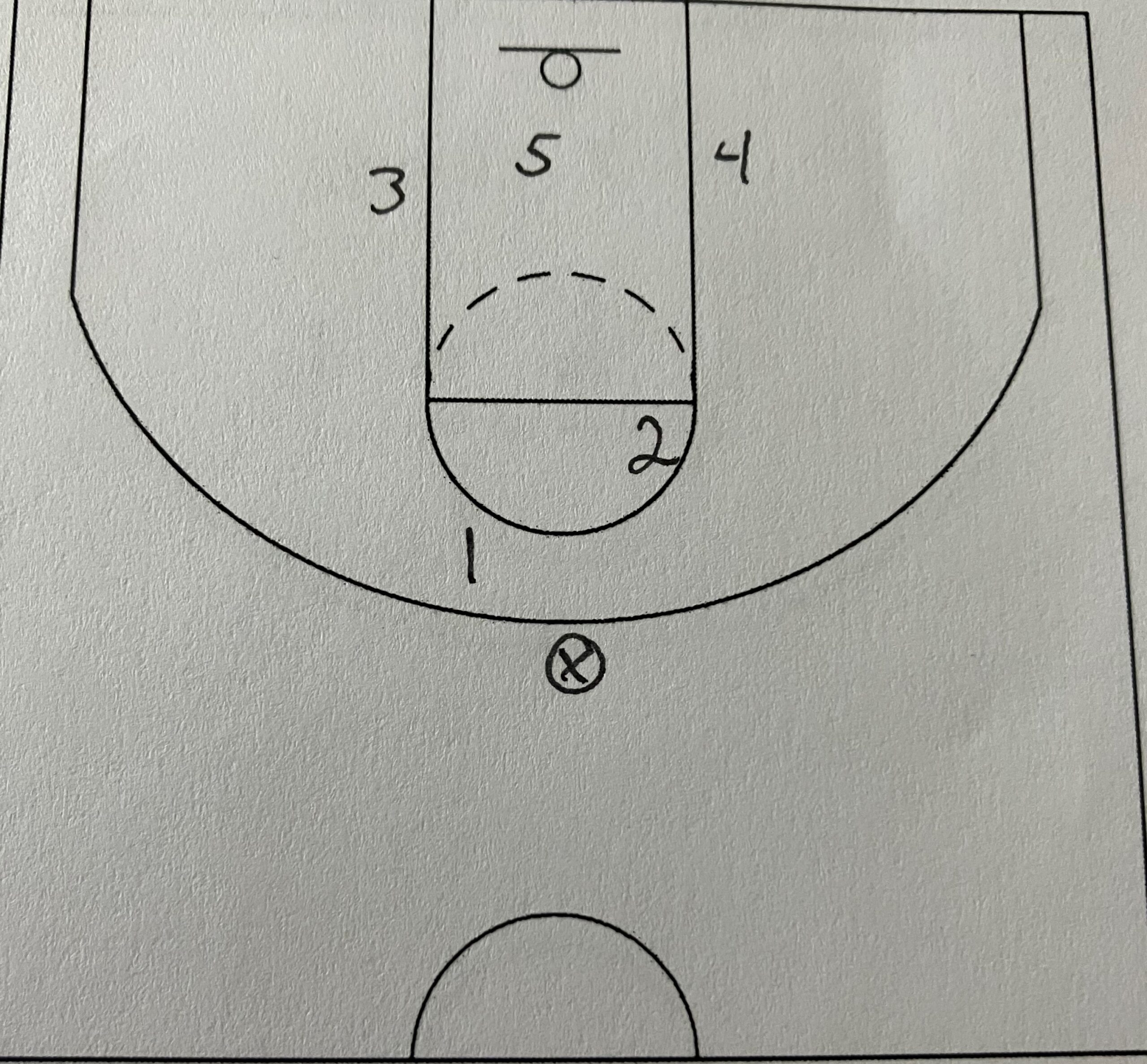
21 thoughts on “2-3 Zone Defense Guide”